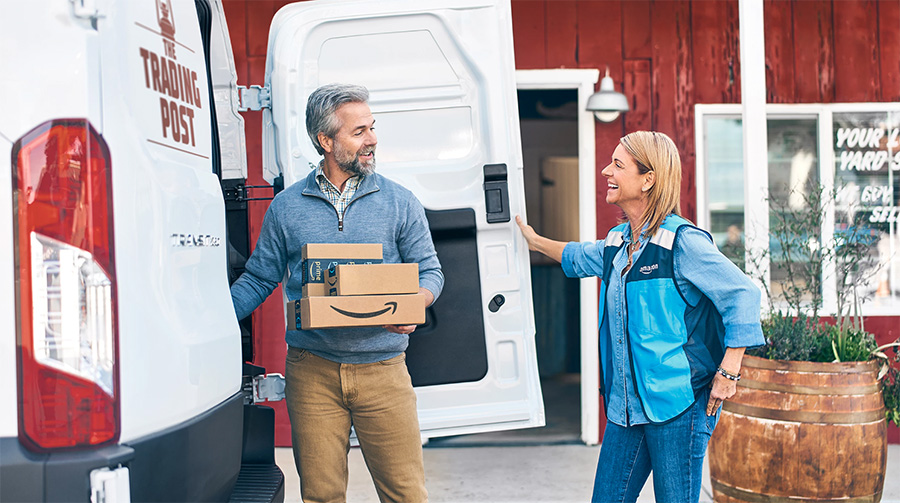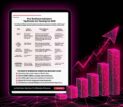Categories
Latest Posts
Tags
Advertising Amazon Amazon Advertising Amazon Experts Amazon Listing Optimization Amazon Marketplace Amazon News Amazon Prime Amazon Professional Sellers Summit Amazon Seller amazon sellers Amazon Seller Tips Amazon Seller Tools ASIN Brand Management Brands Buy Box Campaign Manager Conference COVID-19 downloadable Dynamic Pricing Ecommerce FBA FBM Holiday Season industry news Multi-Channel Fulfillment Optimize pay-per-click Pricing Algorithm Pricing Software Private Label Profits Repricing Repricing Software Revenue Sales Seller Seller-Fulfilled Prime Seller Performance Metrics SEO SKU Sponsored Products Ads Strategy
Get the latest insights right in your inbox

Shipping: What Does Confirm Shipment Mean on Amazon?
There are two ways to ship items to customers in the Amazon marketplace. These are known as Fulfillment By Amazon (FBA) and Fulfillment By Merchant (FBM).
Merchants can choose to ship the item is by one or both of these methods, and there are several reasons to choose between FBM or FBA.
Table of Contents
- FBA Shipping Information
- FBM Shipping Information
Shipping Benefits Associated with FBA
When the Seller decides to choose Fulfillment by Amazon (FBA), there are added benefits that the Seller is able to offer customers, increasing opportunities to sell products successfully through Amazon.
Customers buying products from Sellers using FBA are eligible for Super Saver Shipping and Amazon Prime, which offers the Seller competitive pricing on inventory.
Super Saver Shipping Sellers
This shipping method allows customers these benefits:
- Free shipping on eligible items with a minimum purchase of $25.
- Merchandise available will be shipped in 5-8 business days.
Amazon Prime
This method allows customers these benefits:
- Two-day shipping absolutely free.
- No minimum order size.
- Unlimited streaming of movies and TV shows instant on Prime Instant Videos.
- A free Kindle book rental each month through the Kindle Owners’ Lending Library.
FBA Shipping Requirements with Amazon
The seller must follow the requirements listed below for shipping specific items:
- Certain items require sellers to ship within a certain time frame. All Books, Music, Video, and DVD (BMVD) products must be within two business days of receiving the order.
- Shipping for BMVD products is set by Amazon and is set based on the product and the shipping preference of the Buyer.
- The seller must offer standard shipping for all items sold on Amazon.
- The seller may choose whether to offer international shipping as well as other expedited shipping methods.
- International shipping is offered for BMVD products in countries approved by Amazon by using the FBA Export.

Mastering Shipping Fees
Use Feedvisor, the AI pricing engine that drives profits and revenues while reducing inventory fees.
FBA Shipping Services and Reduced Delivery Times
If they qualify, sellers of Books, Music, Video, and DVD (BMVD) products are able to choose reduced shipment times for Standard and Expedited shipments. When selected, this will be available for Buyers to view during checkout and in the details of the Buyer’s order. The reduced shipping is as follows:
- Standard shipping can be reduced from 4-14 days to 3–5 days.
- Expedited shipping can be reduced from 2-6 days to 1–3 days.
In able to qualify for reduced shipping times of BMVD products, sellers must meet the following requirements:
- The seller must have shipped at least 10 units in the previous 30 days.
- The seller must have used tracking on 98 percent of shipments for the previous 30 days.
- The seller must have made deliveries on time and maintain a delivery score of 97 percent for the previous 30 days.
If the seller qualifies, the option to reduce shipping time will remain as an option for Buyers. However, if the seller’s tracking dips below 98 percent or the on-time delivery scores go under 97 percent, the option for reduced shipping time for the seller’s listings will automatically revert back to the Standard and Expedited shipping times.
How to Confirm an FBA Shipment on Amazon
To provide a high standard of customer service, the seller will confirm the shipment of units shipped immediately by:
- From Seller Central, click on the order in Manage Orders under the Orders tab.
- Click the Confirm Shipment button next to the order, and the Confirm Shipments page will appear.
- Enter the Ship Date for the order.
- Select the appropriate shipping Carrier (such as USPS) from the drop-down list for that particular order.
- Enter the Shipping Service and the Tracking ID.
- Click the Confirm Shipment button, and the shipment will be marked as confirmed.
How Much Does FBA Shipping Cost?
With Fulfillment by Amazon, shipping rates depend on the selected shipping speed and size/weight of the items. Global shipping rates are a separate set of rates laid out by geographic region and countries approved by Amazon. There are specific guidelines for packaging Amazon products that sellers need to take into consideration as well.
With merchant-fulfilled Amazon shipping methods, typically, there are more cost benefits associated because they eliminate any FBA storage fees.
Shipping Benefits Associated with Amazon Seller Self-Shipping (FBM)
With Fulfillment by Merchant (including Seller Fulfilled Prime), there are definite benefits to hands-on fulfillment. You have more control over your inventory and can access your products whenever you want. You can own the fulfillment process from start to finish.
On the flip side, however, FBM involves more time, as it is the seller’s responsibility to store, pick, pack, and ship products. Sellers need to coordinate packing slips, shipping labels, and shipment confirmations.
All orders placed through Amazon are to be fulfilled in a timely manner, in accordance with the Order Timeline. That is, when a buyer makes a purchase, the FBM seller of that product bears the responsibility of making sure that the buyer receives the product within the time period specified.
Amazon requires sellers to confirm the shipment of orders within 30 days of the order being made, or the order is canceled automatically. Within that timeframe, however, sellers determine their requirements for handling time – how soon after the buyer’s purchase the order must be transferred to the delivery carrier.
The following steps are taken to fulfill FBM seller orders in a timely way:
1. Buyer places an order: A buyer adds a given seller’s product to the shopping cart and proceeds to checkout to complete the purchase. At this time, the terms of the sale are final, including the method of payment and shipping.
2. Amazon Payments begins processing order: The order is pending, and the seller can view the order’s status in the Manage Orders tab of the Seller Central page.
3. Order is held by Amazon Payments: This planned delay in processing allows buyers to cancel their orders if they were made by mistake or with incorrect information. A canceled order has the status “Canceled” on the Manage Orders tab of the Seller Central page.
- Buyers using standard checkout procedures have 15 minutes after placing the order to cancel it.
- Buyers using the 1-Click method to checkout have 105 minutes after placing the order to cancel it.
4. Order is validated by Amazon Payments: Amazon evaluates the order details and payment information of the buyer.
Several outcomes of this evaluation are possible:
- Payment is successful: When payment information is confirmed, Amazon Payments sends an order confirmation to both the buyer and the seller and sends the shipping information to the seller. On the Manage Orders tab of the Seller Central page, the order’s status is “Payment complete.” With successful payment, notifications appear in under two hours.
- Payment is initially unsuccessful: When the payment information cannot be confirmed, the payment is unsuccessful, and Amazon Payments emails the buyer to establish that further action is required to process the transaction. The seller is also notified by Amazon Payments and is asked to hold the designated item for up to 72 hours in anticipation of successful payment from the buyer. During this time, the order appears as “Pending” on the Manage Orders tab of the Seller Central page.
- Payment processing is extended: When Amazon Payments implements certain security measures, an order’s processing time may be extended as long as 1-3 business days. The seller may not receive notification about the status of this kind of order, and the order will appear as “Pending” on the Manage Orders tab of the Seller Central page.
- Payment is unsuccessful: When payment information cannot be confirmed, and the buyer does not respond to Amazon Payments with successful payment, Amazon Payments cancels the order and does not notify the seller. The order’s status is “Canceled” on the Manage Orders tab of the Seller Central page.
- Seller receives order notification from Amazon Payments: When an order payment is successful, Amazon Payments emails the seller with the shipping information and order status. The seller ships the order to the shipping address provided by Amazon Payments, as listed in the Orders Report. The seller is not authorized to ship the item to any other address.
- Seller receives buyer’s funds from Amazon Payments: Aside from any fees, Amazon Payments places all funds generated from the order into the designated account established by the seller.
5. Seller processes and ships the order: The seller, unless using Fulfillment By Amazon (FBA), confirms the order in the Manage Orders tab of the Seller Central page and ships the order (unless using FBA) using the appropriate shipping carrier, who delivers the package to the buyer’s shipping address.
6. Buyer receives their order: When the buyer receives the order, they are encouraged to provide feedback about the seller’s customer service.


